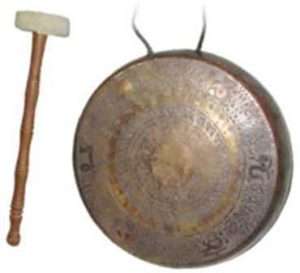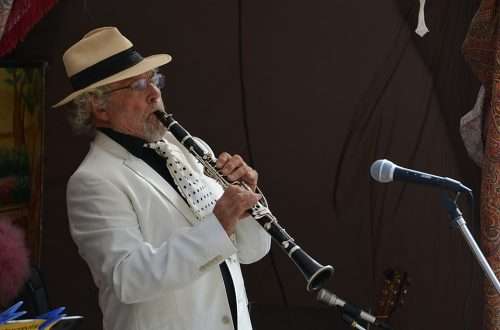
The history of the gong
Gong – percussion musical instrument, which has many varieties. The gong is a disc made of metal, slightly concave in the center, freely suspended on a support.
Birth of the first gong
The island of Java, located in the southwest of China, is called the birthplace of the gong. Starting from the II century BC. The gong is widely distributed throughout China. The copper gong was widely used during the hostilities, the generals, under its sounds, boldly sent troops on the offensive against the enemy. Over time, it begins to be used for other purposes. To date, there are more than thirty variants of gongs from large to small.
Types of gongs and their features
The gong is made from various materials. Most often from an alloy of copper and bamboo. When struck with a mallet, the disc of the instrument begins to oscillate, resulting in a booming sound. Gongs can be suspended and bowl-shaped. For large gongs, large soft beaters are used. There are many performance techniques. The bowls can be played in different ways. It can be beaters, just rubbing a finger on the edge of the disk. Such gongs have become part of Buddhist religious rites. Nepalese singing bowls are used in sound therapy.
The Chinese and Javanese gongs are the most widely used. Chinese is made of copper. The disk has edges bent at an angle of 90°. Its size varies from 0,5 to 0,8 meters. The Javanese gong is convex in shape, with a small hillock in the center. The diameter varies from 0,14 to 0,6 m. The sound of the gong is longer, slowly fading, thick. Nipple gongs make different sounds and come in different sizes. The unusual name was given due to the fact that an elevation was made in the middle, similar in shape to a nipple, made of a material different from the main instrument. As a result, the body gives a dense sound, while the nipple has a bright sound, like a bell. Such instruments are found in Burma, Thailand. In China, the gong is used for worship. Wind gongs are flat and heavy. They got their name for the duration of the sound, similar to the wind. When playing such an instrument with sticks ending in nylon heads, the sound of small bells is heard. Wind gongs are loved by drummers performing rock songs.
Nipple gongs make different sounds and come in different sizes. The unusual name was given due to the fact that an elevation was made in the middle, similar in shape to a nipple, made of a material different from the main instrument. As a result, the body gives a dense sound, while the nipple has a bright sound, like a bell. Such instruments are found in Burma, Thailand. In China, the gong is used for worship. Wind gongs are flat and heavy. They got their name for the duration of the sound, similar to the wind. When playing such an instrument with sticks ending in nylon heads, the sound of small bells is heard. Wind gongs are loved by drummers performing rock songs.
Gong in classical, modern music
To maximize the sonic possibilities, symphony orchestras play different varieties of gong. The small ones are played with sticks with soft tips. At the same time, on large mallets, which end with felt tips. The gong is often used for the final chords of musical compositions. In classical works, the instrument has been heard since the XNUMXth century. Giacomo Meyerbeer is the first composer who turned his attention to his sounds. The gong makes it possible to emphasize the significance of the moment with one blow, often marks a tragic event, such as a catastrophe. So, the sound of the gong is heard during the abduction of Princess Chernomor in Glinka’s work “Ruslan and Lyudmila”. In S. Rachmaninov’s “Tocsin” the gong creates an oppressive atmosphere. The instrument sounds in the works of Shostakovich, Rimsky-Korsakov, Tchaikovsky and many others. Folk Chinese performances on stage are still accompanied by a gong. They are used in the arias of the Beijing Opera, the drama “Pingju”.
Giacomo Meyerbeer is the first composer who turned his attention to his sounds. The gong makes it possible to emphasize the significance of the moment with one blow, often marks a tragic event, such as a catastrophe. So, the sound of the gong is heard during the abduction of Princess Chernomor in Glinka’s work “Ruslan and Lyudmila”. In S. Rachmaninov’s “Tocsin” the gong creates an oppressive atmosphere. The instrument sounds in the works of Shostakovich, Rimsky-Korsakov, Tchaikovsky and many others. Folk Chinese performances on stage are still accompanied by a gong. They are used in the arias of the Beijing Opera, the drama “Pingju”.





